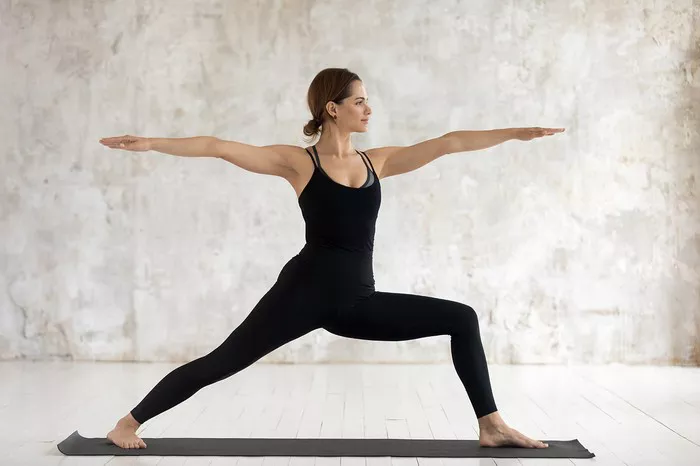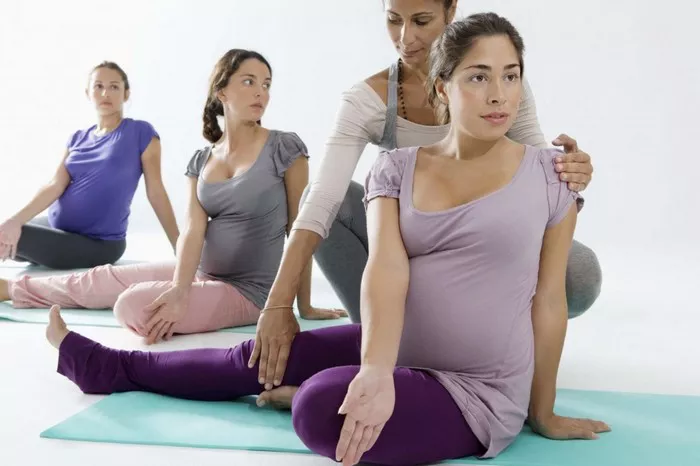Origins and Symbolism
The Supine Spinal Twist Pose, known as Supta Matsyendrasana in Sanskrit, is a fundamental posture in the practice of yoga. “Supta” means supine or reclined, “Matsyendra” is derived from the name of the yogic sage Matsyendra, and “asana” means pose or posture. Matsyendra is often credited with founding Hatha Yoga and is revered as a master of yoga postures and techniques. The twist is symbolic of the yogic principle of wringing out physical and emotional impurities, helping practitioners achieve a state of balance and harmony.
The twisting action in this pose mimics the wringing out of a wet cloth, squeezing out the impurities and toxins. Symbolically, it represents the release of negative emotions and the shedding of stress, promoting a sense of renewal and clarity. The Supine Spinal Twist Pose is often used in yoga sequences to help prepare the body for deeper relaxation and meditation, making it a vital component of any comprehensive yoga practice.
Physical and Mental Benefits
The Supine Spinal Twist Pose offers a multitude of benefits, both physical and mental, making it a valuable addition to any yoga practice.
Physical Benefits
Spinal Mobility and Flexibility: This pose enhances the flexibility of the spine, promoting better alignment and posture. The gentle twisting motion helps to lubricate the spinal discs, preventing stiffness and promoting overall spinal health.
Digestive Health: The twisting motion massages the abdominal organs, stimulating digestion and helping to alleviate issues such as constipation and bloating. It also aids in detoxification by promoting better circulation to the digestive organs.
Relief from Back Pain: The Supine Spinal Twist Pose helps to alleviate lower back pain by stretching the muscles of the back and hips. It provides a gentle release for tension and tightness, making it particularly beneficial for those who suffer from chronic back issues.
Improved Circulation: By promoting better blood flow to the spine and surrounding muscles, this pose enhances overall circulation, ensuring that nutrients and oxygen are efficiently delivered throughout the body.
Enhanced Flexibility in the Hips and Shoulders: The stretch provided by this pose helps to open up the hips and shoulders, improving flexibility and range of motion in these areas.
Mental Benefits
Stress Relief: The Supine Spinal Twist Pose is deeply relaxing, helping to calm the nervous system and reduce stress levels. The gentle twist encourages the release of tension from the body, promoting a sense of peace and tranquility.
Emotional Release: Twisting poses are believed to help release pent-up emotions and negative energy. By performing this pose, practitioners can experience a sense of emotional release and balance, leaving them feeling lighter and more centered.
Improved Sleep: Regular practice of this pose can help improve sleep quality by promoting relaxation and reducing stress. It is often recommended as part of a bedtime yoga routine to prepare the body for restful sleep.
Mindfulness and Focus: The Supine Spinal Twist Pose encourages mindfulness by requiring practitioners to focus on their breath and bodily sensations. This enhances overall awareness and concentration, making it an excellent pose for cultivating a meditative state.
Variations and Modifications
The Supine Spinal Twist Pose can be adapted to suit different levels of flexibility and experience. Here are some variations and modifications to consider:
Variations
Extended Leg Variation: For a deeper stretch, extend the top leg straight out rather than keeping it bent. This variation increases the intensity of the twist and stretches the hamstrings and IT band.
Eagle Legs Twist: Cross the top leg over the bottom leg as if performing the Eagle Pose (Garudasana) legs. This adds an additional challenge and deeper stretch to the hips and lower back.
Arms in Cactus Position: Instead of extending the arms straight out to the sides, bend the elbows to 90 degrees, resembling a cactus shape. This variation opens up the chest and shoulders more deeply.
Bound Supine Spinal Twist: For an advanced variation, bind the top leg with the opposite hand. This requires more flexibility and provides a deeper stretch to the back and hips.
Modifications
Use of Props: Place a bolster or a folded blanket under the bent knee for support if the knee does not reach the floor comfortably. This modification ensures a gentle twist without straining the lower back.
Bent Knee Option: Keep both knees bent and feet flat on the floor if extending the legs is too intense. This modification reduces the intensity of the twist while still providing a beneficial stretch.
Gentle Twist: For a more gentle twist, bring the knees only partway down towards the floor. This is suitable for beginners or those with limited flexibility.
Neck Position: If turning the head to the opposite side is uncomfortable, keep the gaze upwards or in a neutral position. This modification prevents strain on the neck and ensures a comfortable twist.
See Also: 10 Best Beach Yoga Poses for Relaxation and Strength
Step-by-Step Instructions
Follow these steps to perform the Supine Spinal Twist Pose safely and effectively:
1. Preparation: Begin by lying on your back with your legs extended and arms resting by your sides. Take a few deep breaths to relax and center yourself.
2. Bend the Knees: Draw your knees up towards your chest, keeping your feet together. Wrap your arms around your shins and gently rock from side to side to release any tension in your lower back.
3. Drop the Knees to One Side: On an exhale, allow your knees to fall to the right side of your body. Ensure that your knees are stacked on top of each other and your legs are at a right angle to your torso. If necessary, use your right hand to gently press down on your left knee to deepen the twist.
4. Extend the Arms: Extend your arms out to the sides at shoulder height, palms facing up. Alternatively, bend your elbows to 90 degrees, creating a cactus shape with your arms.
5. Turn the Head: If comfortable, turn your head to the left, looking over your left shoulder. Ensure that your shoulders remain flat on the floor.
6. Breathe and Hold: Hold the pose for 5-10 breaths, focusing on deep, steady inhalations and exhalations. Feel the stretch along your spine and the gentle massage of your internal organs.
7. Return to Center: On an inhale, draw your knees back to the center and hug them into your chest. Take a moment to neutralize your spine before repeating the twist on the other side.
8. Repeat on the Other Side: Exhale and allow your knees to fall to the left side of your body. Turn your head to the right, if comfortable, and hold the pose for an equal amount of time.
9. Final Relaxation: After completing both sides, extend your legs and arms, and rest in Savasana (Corpse Pose) for a few minutes to fully integrate the benefits of the pose.
Precautions and Contraindications
While the Supine Spinal Twist Pose is generally safe and beneficial for most practitioners, there are some precautions and contraindications to be aware of:
Spinal Injuries: Individuals with serious spinal conditions or injuries should avoid deep twisting poses unless supervised by a qualified yoga instructor or healthcare professional.
Pregnancy: Pregnant women should approach this pose with caution. It is advisable to practice a gentler twist with ample support, avoiding deep twists that put pressure on the abdomen.
Recent Surgeries: Those who have undergone recent abdominal or spinal surgeries should avoid this pose until fully healed and cleared by their healthcare provider.
Herniated Discs: Practitioners with herniated discs should be cautious and may need to avoid deep twists. Gentle modifications or alternative poses may be more suitable.
Neck Issues: If you have neck problems, avoid turning the head to the side. Keep the gaze upwards or in a neutral position to prevent strain.
Flexibility Limits: Always listen to your body and avoid forcing the twist beyond your comfort level. Use props and modifications as needed to ensure a gentle and safe stretch.
Heart Conditions: Those with certain heart conditions should practice this pose with caution and consult their healthcare provider if unsure.
Conclusion
The Supine Spinal Twist Pose is a versatile and beneficial posture that can enhance physical and mental well-being. By understanding its origins, symbolism, and numerous benefits, practitioners can incorporate this pose into their regular yoga practice with confidence. Whether you are seeking to improve spinal health, relieve stress, or enhance overall flexibility, the Supine Spinal Twist Pose offers a gentle yet powerful means to achieve these goals. Always remember to practice mindfully, honor your body’s limits, and enjoy the rejuvenating effects of this classic yoga posture.
Related topics:























